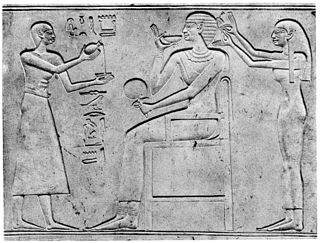See also
- Maat, an Ancient Egyptian goddess
Mayet may refer to:

Le Mans is a city in northwestern France on the Sarthe River where it meets the Huisne. Traditionally the capital of the province of Maine, it is now the capital of the Sarthe department and the seat of the Roman Catholic diocese of Le Mans. Le Mans is a part of the Pays de la Loire region.
Punt or punting may refer to:
BA or variants may refer to:
Shen may refer to:
May is the fifth month of the year.
Min or MIN may refer to:
Ballon may refer to:

The arrondissement of La Flèche is an arrondissement of France in the Sarthe department in the Pays de la Loire region. It has 118 communes. Its population is 152,008 (2016), and its area is 2,521.4 km2 (973.5 sq mi).

Mayet is a commune in the Sarthe department in the region of Pays de la Loire in north-western France.

Ashayet or Ashait was an ancient Egyptian queen consort, a wife of Mentuhotep II in the 11th Dynasty. Her tomb (DBXI.17) and small decorated chapel were found in Mentuhotep II's Deir el-Bahari temple complex. The shrine and burial to Ashayet was found along with the tombs of four other women in their twenties and a young girl, Henhenet, Kawit, Kemsit, Sadeh and Mayet. However, it is likely that there were three other additional shrines that were destroyed in the expansions of Mentuhotep II's burial complex. The nine shrines were built in the First Intermediate Period, prior to Mentuhotep II's reunification of Egypt. She and three other women of the six bore queenly titles, and most of them were Priestesses of Hathor. The location of their burial is significant to their titles as Priestesses of Hathor as the cliffs of Deir el-Bahri were sacred to Hathor from the Old Kingdom onwards.

Henhenet was an ancient Egyptian queen consort, a lower ranking wife of Pharaoh Mentuhotep II of the 11th dynasty. Her tomb (DBXI.11) and small decorated chapel were found in her husband's Deir el-Bahari temple complex, behind the main building, along with the tombs of five other ladies, Ashayet, Kawit, Kemsit, Sadeh and Mayet. Most of them were priestesses of Hathor, so it is possible that they were buried there as part of the goddess's cult, but it is also possible that they were the daughters of nobles the king wanted to keep an eye upon.

Kawit was an ancient Egyptian queen consort, a lower ranking wife of Pharaoh Mentuhotep II of the 11th Dynasty. Her tomb (DBXI.9) and small decorated chapel were found in her husband's Deir el-Bahari temple complex, behind the main building, along with the tombs of five other ladies, Ashayet, Henhenet, Kemsit, Sadeh and Mayet. She and three other women of the six bore queenly titles, and most of them were priestesses of Hathor, so it is possible that they were buried there as part of the goddess's cult, but it is also possible that they were the daughters of nobles the king wanted to keep an eye upon.

Kemsit was an ancient Egyptian queen consort, the wife of pharaoh Mentuhotep II of the 11th Dynasty. Her tomb (TT308) and small decorated chapel were found in her husband's Deir el-Bahari temple complex, behind the main building, along with the tombs of five other ladies, Ashayet, Henhenet, Kawit, Sadeh and Mayet. Most of them were priestesses of Hathor, so it is possible that they were buried there as part of the goddess's cult, but it is also possible that they were the daughters of nobles the king wanted to keep an eye upon.

Sadeh or Sadhe was an ancient Egyptian queen consort, a lower ranking wife of Pharaoh Mentuhotep II of the 11th Dynasty. Her tomb (DBXI.7) and small decorated chapel were found in her husband's Deir el-Bahari temple complex, behind the main building, along with the tombs of five other women, Ashayet, Henhenet, Kawit, Kemsit and Mayet. She and three other women of the six bore queenly titles, and most of them were priestesses of Hathor, so it is possible that they were buried there as part of the goddess's cult, but it is also possible that they were the daughters of nobles the king wanted to keep an eye upon.

The Kerk Street Mosque, also known as the Jumah Mosque, is located in Johannesburg, South Africa.
Anastasi may refer to:

Mayet was an ancient Egyptian girl buried in the mortuary temple of King Mentuhotep II at Deir el-Bahari. Her burial was found intact. Her position within the royal family of Mentuhotep II is disputed.
The canton of Le Lude is an administrative division of the Sarthe department, northwestern France. Its borders were modified at the French canton reorganisation which came into effect in March 2015. Its seat is in Le Lude.
Mayet is a surname. Notable people with the surname include: